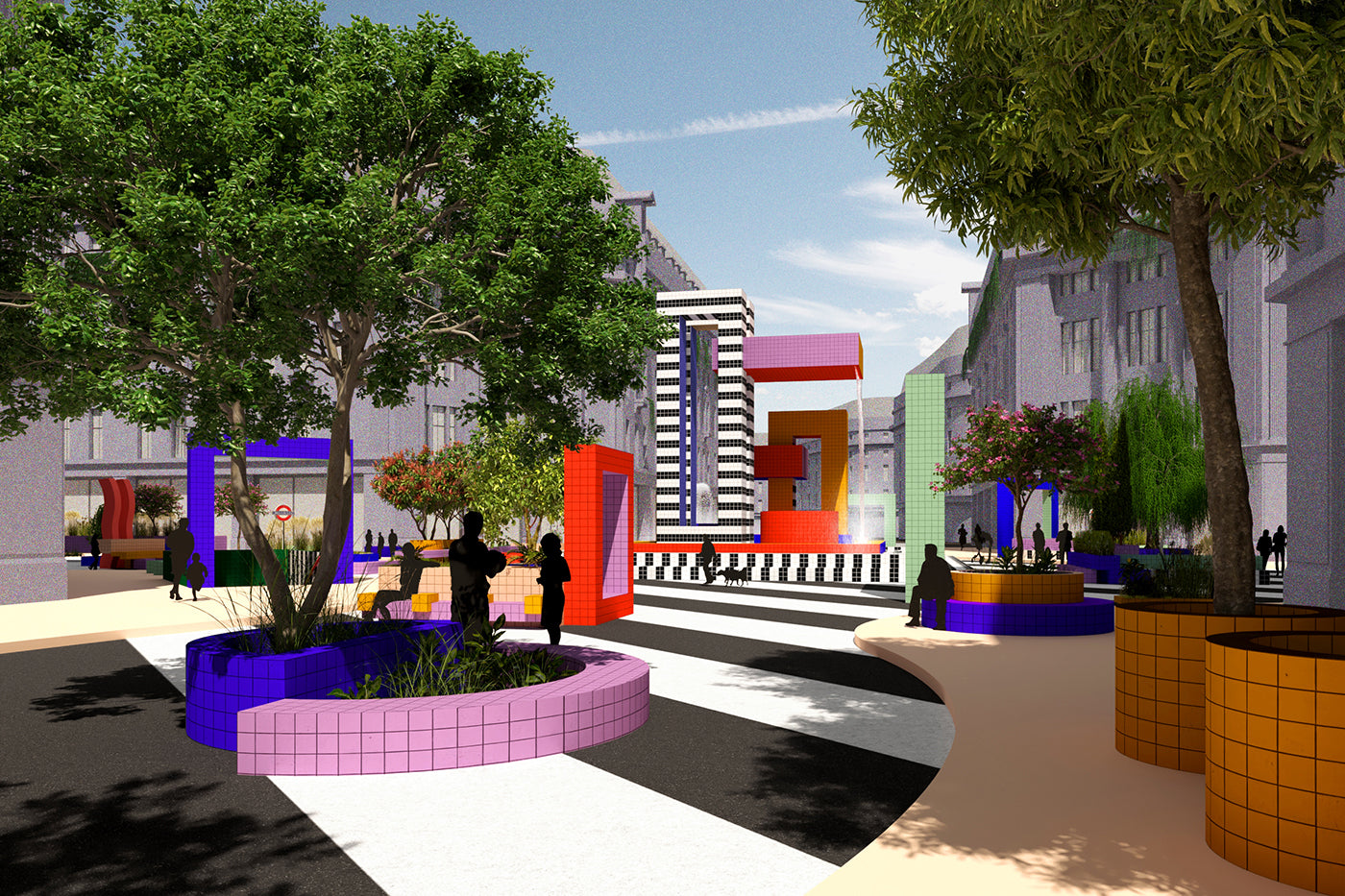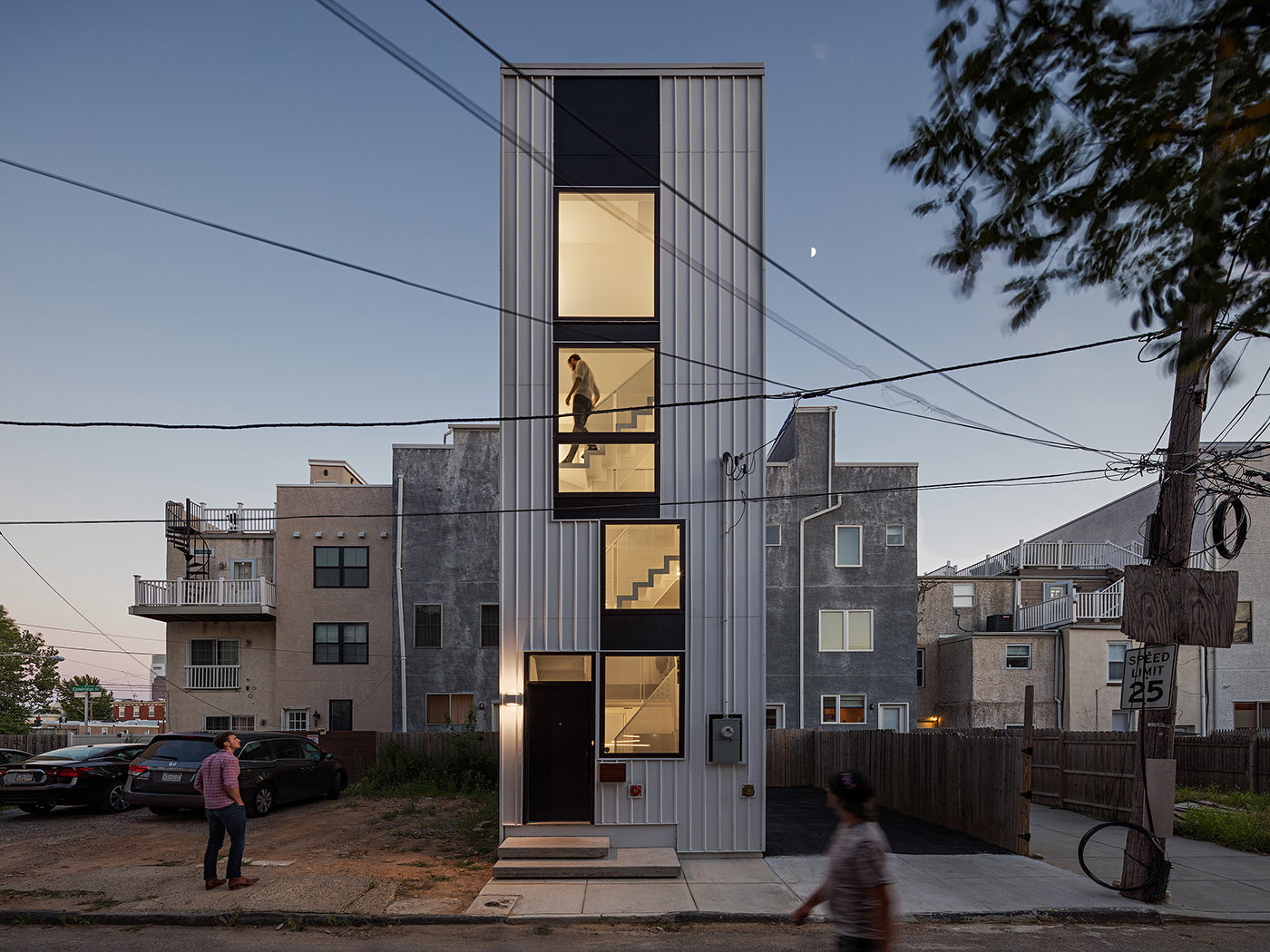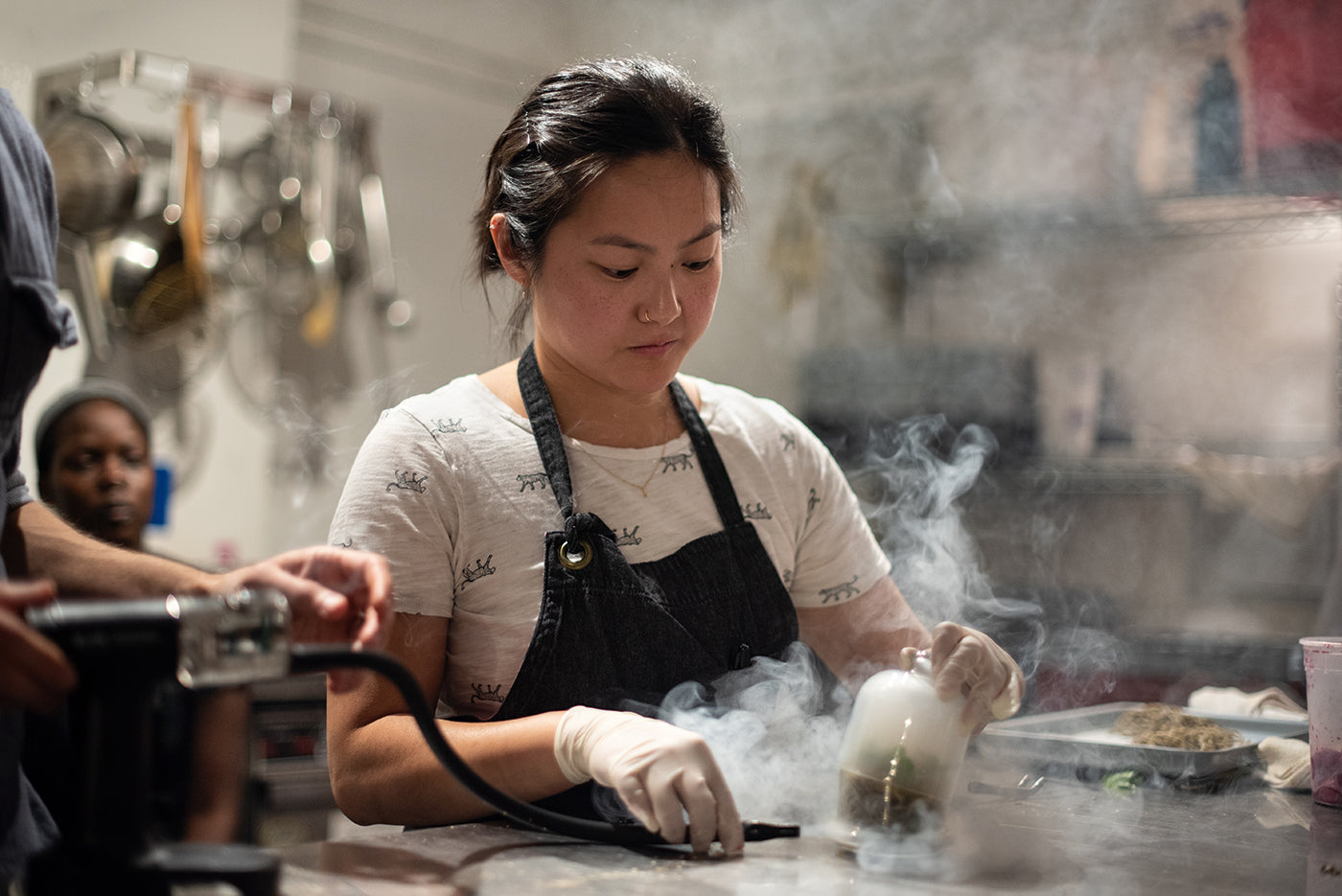
The Role of Art in Post-Pandemic Cities
Camille Walala’s vision of a carless and colorful Oxford Street is a project that other cities would be wise to follow
Barren and bare of pedestrians or any visible signs that London is a metropolis pulsating to the beat of millions of people, the sheer silence of the streets during the first lockdown shocked artist Camille Walala. Cycling around the city with her partner Julia Jomaa, almost void of vehicles, they began to reimagine the capital in a futuristic setting that replaced pollution with plants, and tailgating traffic with fountains. The art intervention uses Walala's signature visual energy, oozing onto a pedestrianized Oxford Street that seems to resemble an ancient Greek agora wrapped up in a Memphis Milano flair.

If 2020 taught us anything, it is that wellness and being connected with the people we share spaces with are pivotal blocks in mental and physical health. Instead of crammed and stressful streets, there is now an opportunity to transform them into places to meet, socialize, and be inspired. (Render: Camille Walala x OmniVisual)
Like billions of people around the world, Londoners were ushered indoors to palliate the threat of the pandemic. Far from a sense of hygge at home, the lockdown instead incited a public outcry about how we treat our cities and the sense of community in our shared spaces. Walala tells us the empty streets inspired her, "it was like a new beginning. This led me to imagine doing something big and bold, to transform the center of the city from just being about shopping or working but as a social space." Having almost backed away from the project over fears it was too speculative, she instead found solitude in the vision as an escape from the struggles of urban spaces.
"I have always loved the idea of making a fountain, especially as a way to bring people together," explains the French-native about the proposed Oxford Circus cascade. 2020 was a year of evaluation and presenting original alternatives, Walala joins a list of artists who are rethinking urban design and how our cities could change for the better. "For some time now I have noticed more artists working on ambitious projects in public spaces," she explains, "it’s a very positive trend. I think artists are more confident and want to share with the people, but also local governments and commissioners have a deeper trust of artists now. And with the pandemic, our relationship with public space and the city has changed." She believes trends have been colliding in a "very inspiring way," noting the NHS rainbows as an example. The hope is for cities in the future to become more inclusive and colorful.


French-born artist Walala is an influential figure in interventions that cross between art and street life. Her previous projects include the Industrial City in New York, White City pedestrian crossing in west London, Adams Plaza Bridge in east London, and the Leyton block of flats takeover in east London. (Render: Camille Walala x OmniVisual)
Working alongside OmniVisual, they present a place of congregation within Europe's busiest shopping street while also challenging whether our attitude to public spaces should be reconsidered. Encouraging discourse where congestion previously existed, the project asks 'what-if' questions about human desires from sprawls in a post-pandemic world. "I think we’ve all changed our understanding of the city," she tells us. Artists want to be involved in the dialogue with town planners. Today she sees artists adapting their ways of being creative and finding their audiences, Walala loves seeing banners and installations out on the streets as the indoor way of living our lives is momentarily halted.
Although she can't predict the future, she finds it exciting that traditions are being broken and creatives are presenting altered portraits of the places we choose to live in. While uncertainty lingers and it takes a toll on mental health, the hope of tomorrow is what prevails in these times. Distinctively bold, Walala wants the project to bring joy and a smile to people while also stirring ideas of how all urban landscapes can be rejuvenated. If the pandemic will accelerate the 'death of the high-street,' perhaps this ambitious public project offers a reinterpretation of communal spaces and the freedom to pause and appreciate the surrounding environment.
Find geometric inspiration from a selection of our Visual Culture titles that explore the movements and masters.


